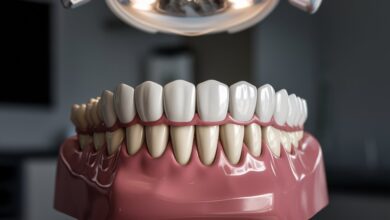Common Hospital Equipment Failures and How to Prevent Them
Common Hospital Equipment Failures
Hospital equipment is essential for providing quality patient care, diagnosing conditions, and performing procedures. However, equipment failures can occur, leading to delays in treatment and potential harm to patients. Understanding common equipment failures and implementing preventive measures is crucial for maintaining a safe and efficient healthcare environment. This article explores the most common types of Hospital Equipment failures and offers practical strategies for prevention.
1. Infusion Pump Failures
Overview
Infusion pumps are critical for administering medications and fluids to patients. They can fail due to software malfunctions, battery issues, or user errors. These failures can lead to underdosing or overdosing, which can significantly affect patient outcomes.
Prevention Strategies
- Regular Maintenance: Schedule routine inspections and maintenance to ensure proper functioning. Follow the manufacturer’s guidelines for servicing.
- User Training: Provide comprehensive training for healthcare staff on operating infusion pumps, focusing on setup, programming, and troubleshooting common issues.
- Software Updates: Keep infusion pump software updated to incorporate the latest safety features and fix known bugs.
2. Imaging Equipment Malfunctions
Overview
Imaging equipment, such as MRI machines, CT scanners, and X-ray machines, plays a vital role in diagnosis and treatment planning. Failures can result from hardware issues, software errors, or operator mistakes.
Prevention Strategies
- Routine Calibration: Regularly calibrate imaging equipment to ensure accurate readings and high-quality images. This should be done by trained biomedical engineers.
- Operator Training: Ensure that technicians and radiologists receive adequate training on operating imaging equipment, including recognizing signs of potential failure.
- Quality Assurance Programs: Implement quality assurance protocols to regularly assess the performance of imaging equipment and identify any anomalies.
3. Ventilator Failures
Overview
Ventilators are lifesaving devices that assist patients with breathing. Common failures can arise from electrical issues, software glitches, or mechanical malfunctions, posing severe risks to patients requiring respiratory support.
Prevention Strategies
- Daily Checks: Perform daily inspections to verify that ventilators are functioning correctly. Check connections, alarms, and battery status.
- Regular Servicing: Schedule routine maintenance by certified technicians to address potential issues before they become critical.
- Simulation Training: Conduct regular simulation training for staff to prepare them for troubleshooting ventilator issues in emergency situations.
4. Defibrillator Malfunctions
Overview
Defibrillators are essential for treating cardiac arrest, delivering shocks to restore normal heart rhythms. Failures can occur due to battery depletion, electrode issues, or software failures, leading to life-threatening situations.
Prevention Strategies
- Battery Management: Implement a battery management system to track battery life and ensure timely replacement of expired or low batteries.
- Regular Testing: Conduct regular testing of defibrillators to verify functionality, including checking leads and pads for wear and tear.
- Staff Training: Ensure that all relevant staff are trained in the operation of defibrillators, including how to respond to device alerts or failures during critical situations.
5. Surgical Instrument Failures
Overview
Surgical instruments are crucial for performing operations safely and effectively. Failures can occur due to improper sterilization, wear and tear, or user mishandling, potentially leading to complications during surgery.
Prevention Strategies
- Sterilization Protocols: Establish strict sterilization protocols to prevent infections caused by contaminated instruments. Regularly train staff on proper cleaning techniques.
- Inspection and Maintenance: Implement a routine inspection schedule to check for wear, rust, or damage to surgical instruments. Replace or repair any defective tools immediately.
- User Training: Provide training on the correct handling and usage of surgical instruments to minimize the risk of accidental damage or misuse.
6. Laboratory Equipment Failures
Overview
Laboratory equipment, including centrifuges, microscopes, and analyzers, is essential for accurate testing and diagnosis. Failures may result from power surges, mechanical breakdowns, or calibration issues.
Prevention Strategies
- Routine Maintenance: Schedule regular maintenance checks for laboratory equipment, including calibration and performance validation.
- Environmental Controls: Maintain appropriate environmental conditions, such as temperature and humidity, to prevent equipment malfunctions.
- Staff Education: Train laboratory personnel on proper usage and troubleshooting techniques for various laboratory devices.
Conclusion
Preventing equipment failures in hospitals is critical for ensuring patient safety and maintaining high-quality care. By understanding the common types of equipment failures and implementing effective preventive measures, healthcare facilities can minimize the risks associated with equipment malfunctions. Regular maintenance, comprehensive staff training, and adherence to established protocols are essential components of an effective preventive strategy. Investing in these practices not only safeguards patient health but also enhances the overall efficiency of healthcare delivery.





